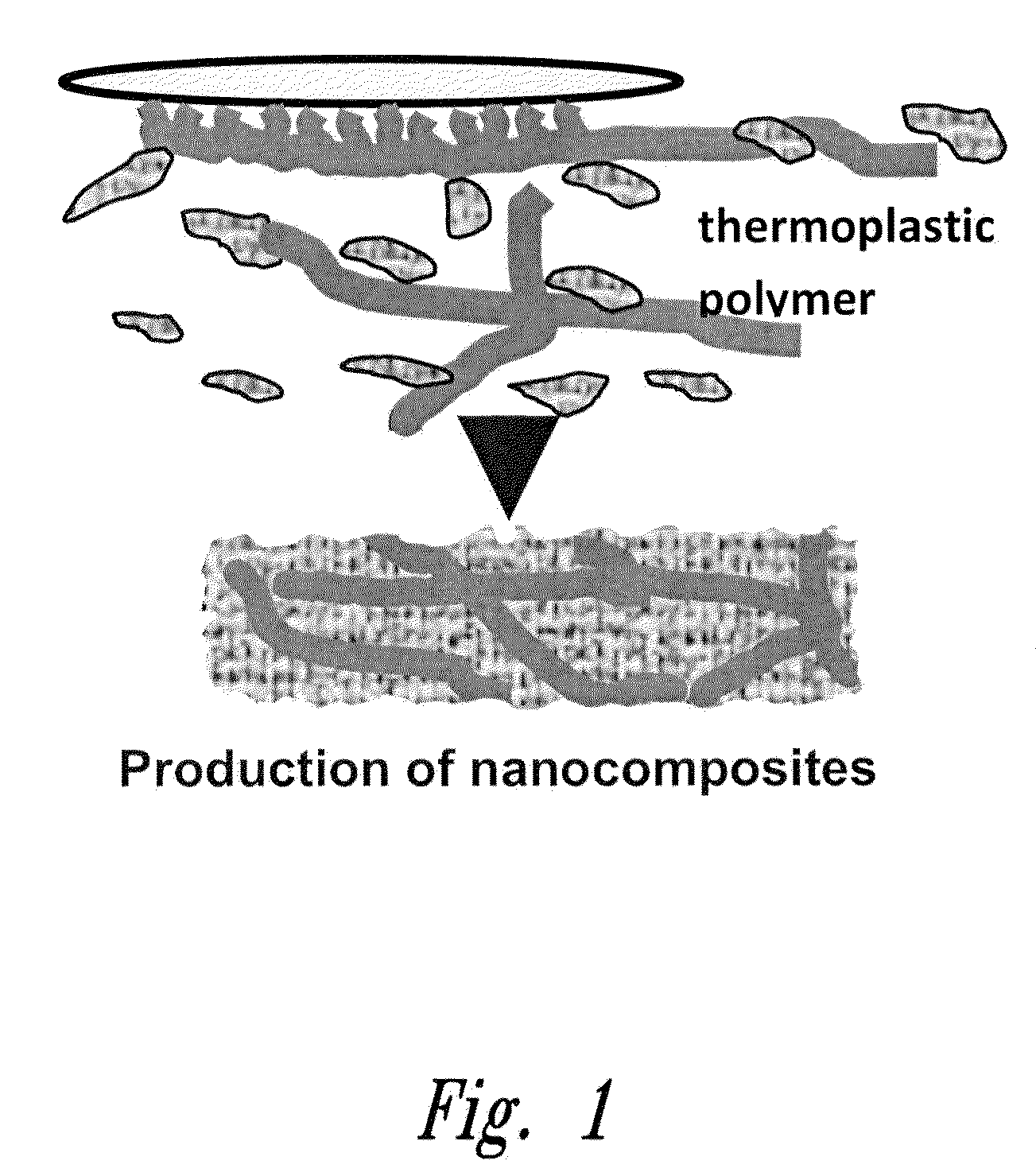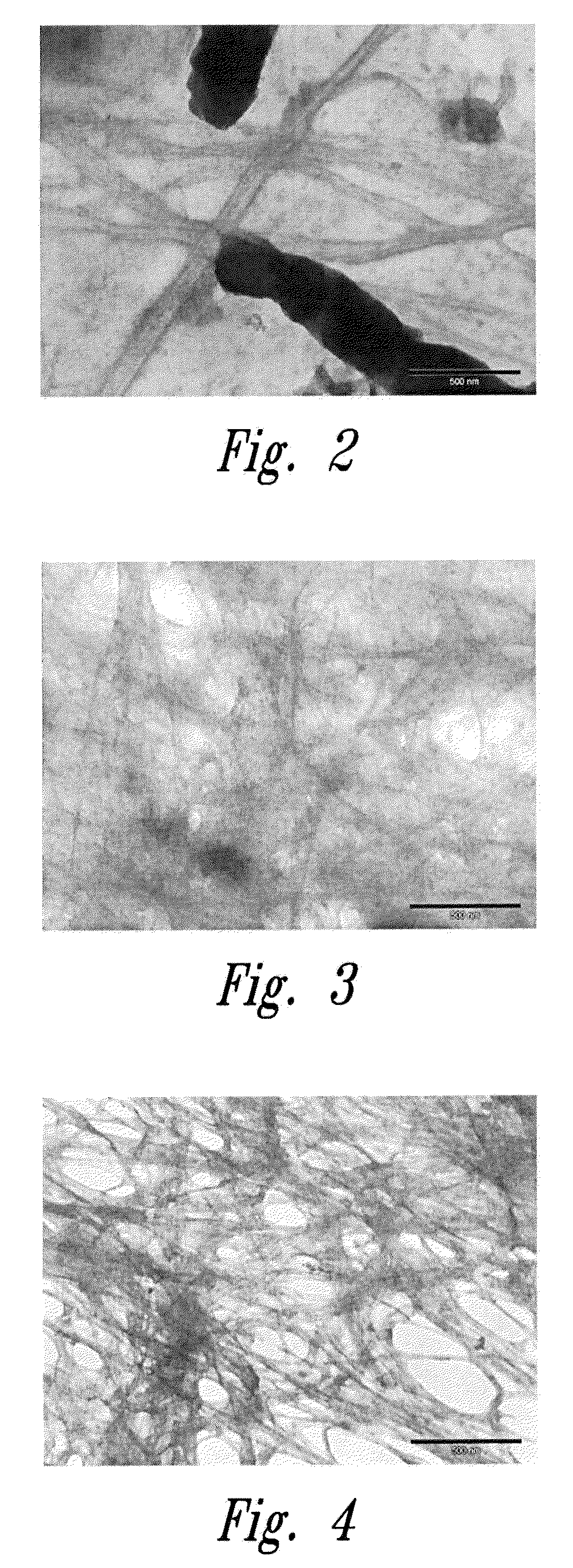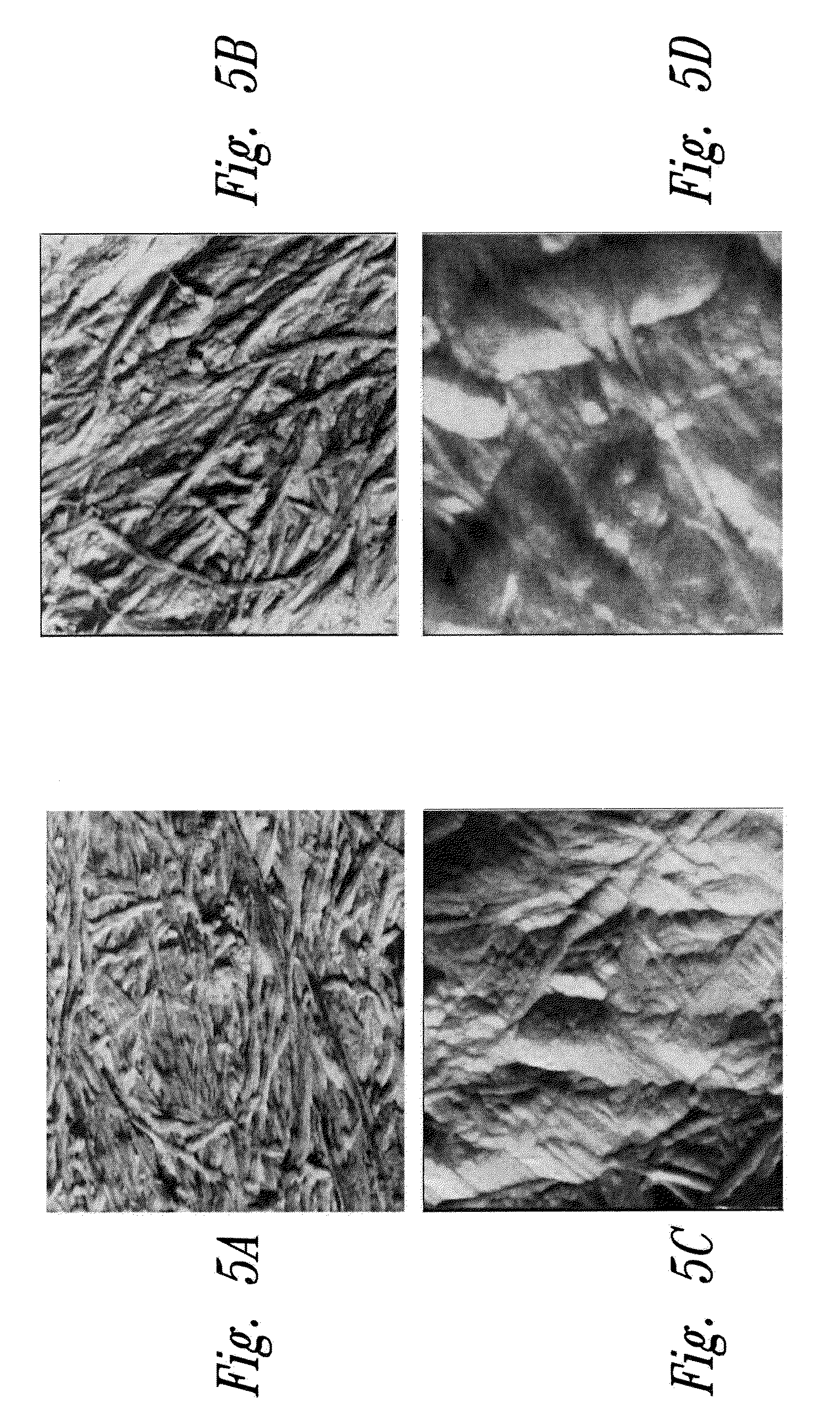Method of in situ bioproduction and composition of bacterial cellulose nanocomposites
a technology of cellulose nanocomposites and in situ biosynthesis, which is applied in the field of bacteria cellulose and cellulose nanocomposite materials and films, can solve the problems of limited success and difficulty in dispersing nanofibers into the polymer matrix, and achieve good mix/dispersion, improve the dispersion of cellulose, and tailor the effect of mechanical properties
- Summary
- Abstract
- Description
- Claims
- Application Information
AI Technical Summary
Benefits of technology
Problems solved by technology
Method used
Image
Examples
example 1
Exemplary Process for in situ Bioproduction of Bacterial Cellulose Nanocomposites
Methods:
[0058]A process for in situ bioproduction of bacterial cellulose nanocomposites, comprising:
[0059](i) dissolving D-glucose, peptone, yeast extract, sodium diphosphate and citric in distilled water, together with a polymer matrix additive to provide the medium, where the nanocomposite may comprise a biobased or synthetic polymer matrix such as a cellulose derivative or a thermoplastic polymer (polybutadiene, polyethylene oxide, polyvinyl alcohol);
[0060](ii) autoclaving the medium (e.g., at 121° C. for 15 minutes);
[0061](iii) cooling the medium (e.g., to room temperature), and inoculating the medium with a suitable cellulose-producing bacterial strain (e.g., a Acetobacter xylinum strain) or with a suspensions taken from a grown cellulose pellicle;
[0062](iv) incubating the inoculated medium at a suitable growth temperature (e.g, at a temperature of about 29° C.) with stirring (e.g., with mild stirr...
example 2
Growth Development of Bacterial Cellulose Nanocomposites
[0067]Polymer was added to the Hestrin-Schramm1 liquid medium of cellulose-producing bacterium Acetobacter xylinum strain # 23769 grown in magnetically-stirred environment, as illustrated in FIG. 1. Polymers chosen were:
PEO1 (MW=100,000)
PEO6 (MW=600,000)
PVA (poly(vinyl alcohol)
PVA22 (MW=22,000)
PVA88 (MW=88,000)
CMC(carboxymethyl cellulose) CMC12(DP=1100 DS=0.7)
CMC13(DP=400 DS=0.7
CMC15(DP=1100 DS=1.2)
example 3
[0068]Morphology of nanocomposites when wet was characterized using TEM (Transmission Electron Microscope). Aspect ratios (L / d) of microfibrils are higher when PEO1 is present in the medium. See FIGS. 2, 3 and 4.
PUM
| Property | Measurement | Unit |
|---|---|---|
| Diameter | aaaaa | aaaaa |
| Diameter | aaaaa | aaaaa |
| Composition | aaaaa | aaaaa |
Abstract
Description
Claims
Application Information
 Login to View More
Login to View More - R&D
- Intellectual Property
- Life Sciences
- Materials
- Tech Scout
- Unparalleled Data Quality
- Higher Quality Content
- 60% Fewer Hallucinations
Browse by: Latest US Patents, China's latest patents, Technical Efficacy Thesaurus, Application Domain, Technology Topic, Popular Technical Reports.
© 2025 PatSnap. All rights reserved.Legal|Privacy policy|Modern Slavery Act Transparency Statement|Sitemap|About US| Contact US: help@patsnap.com



